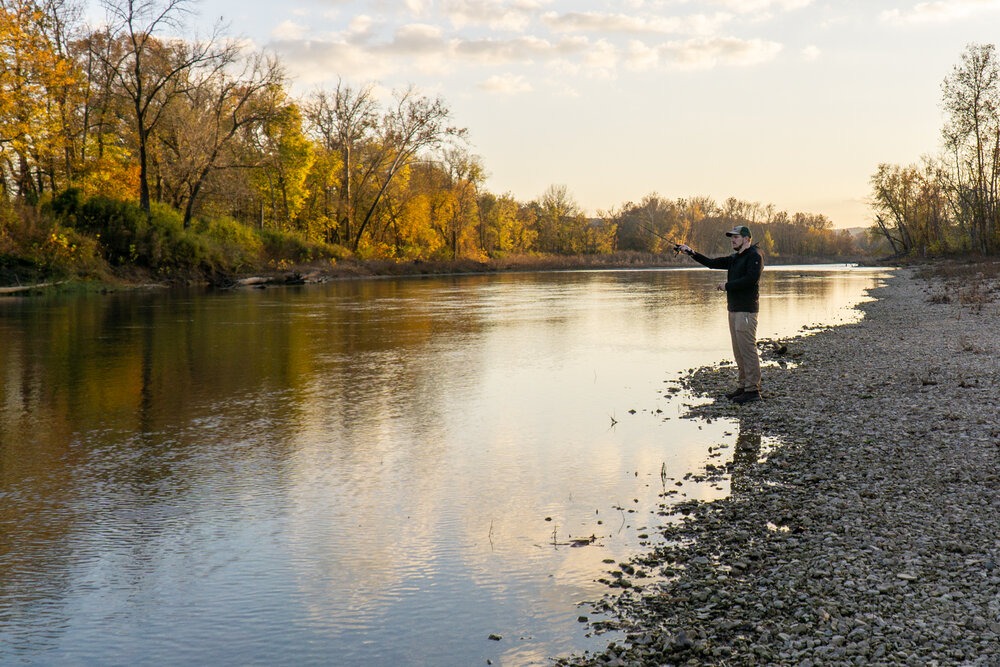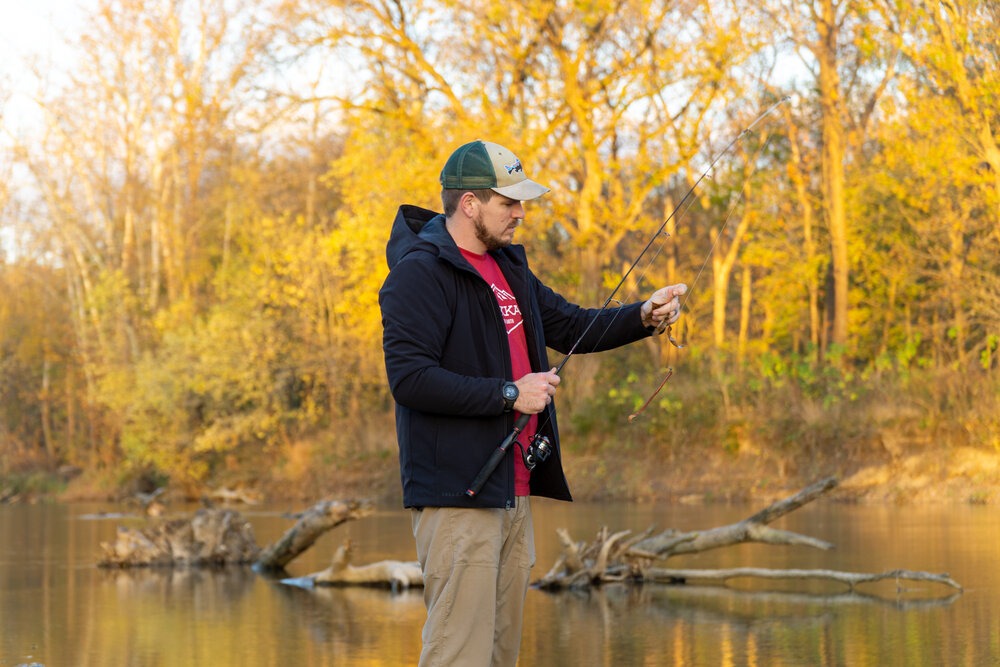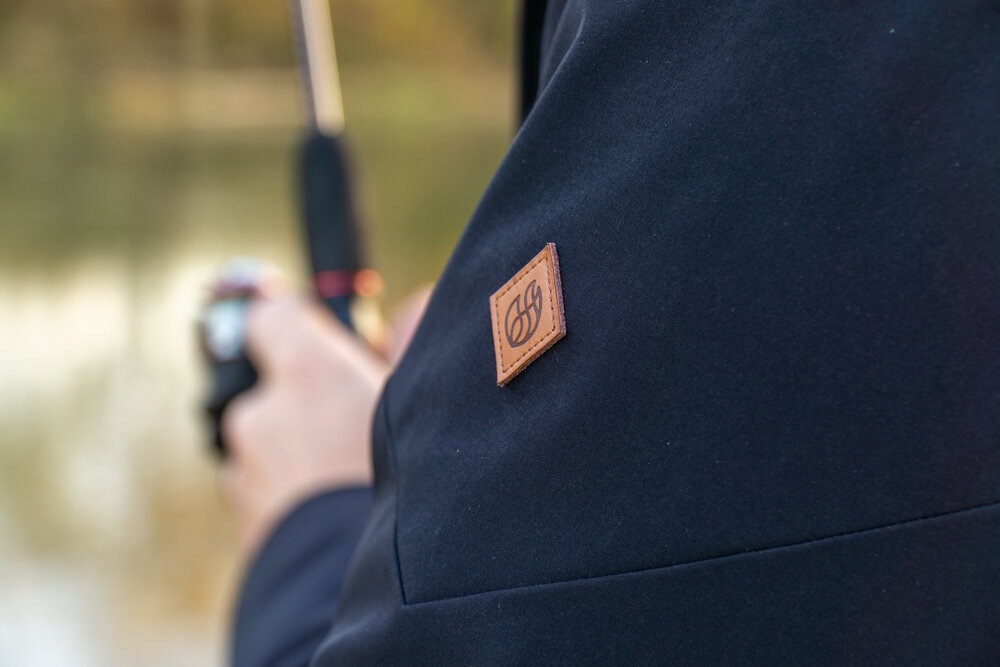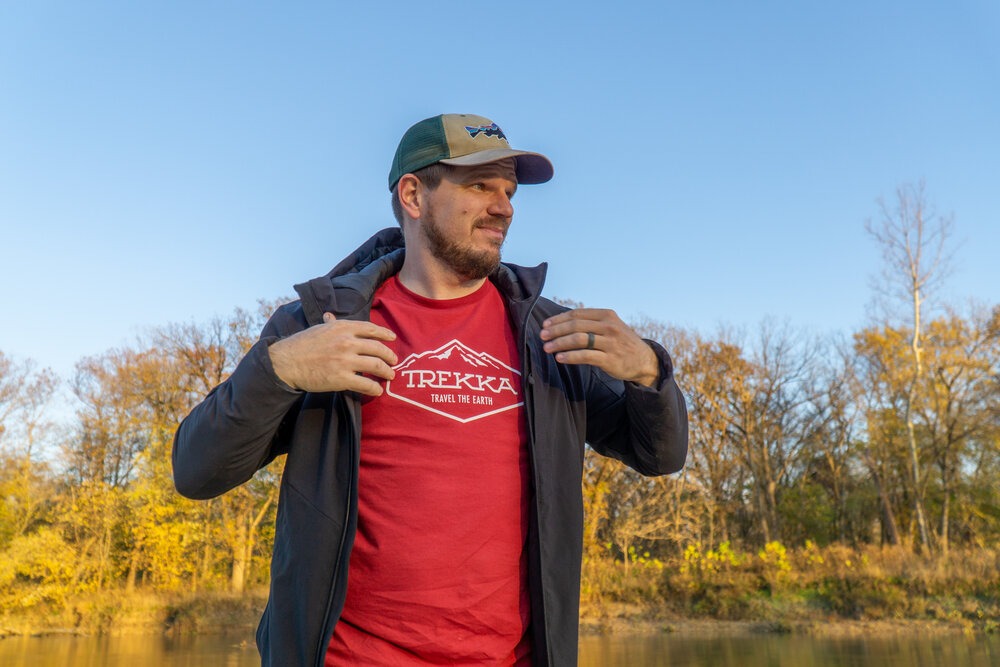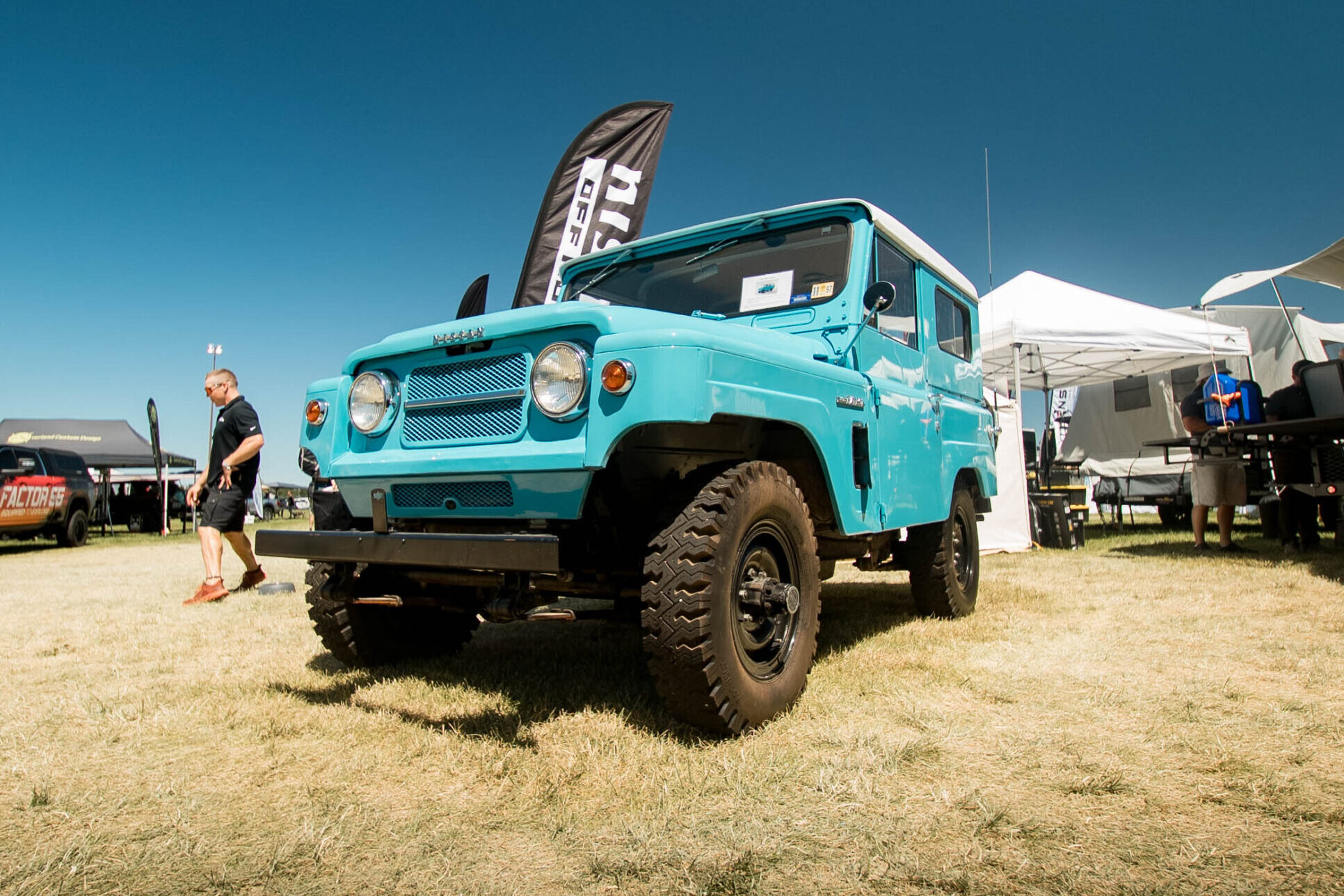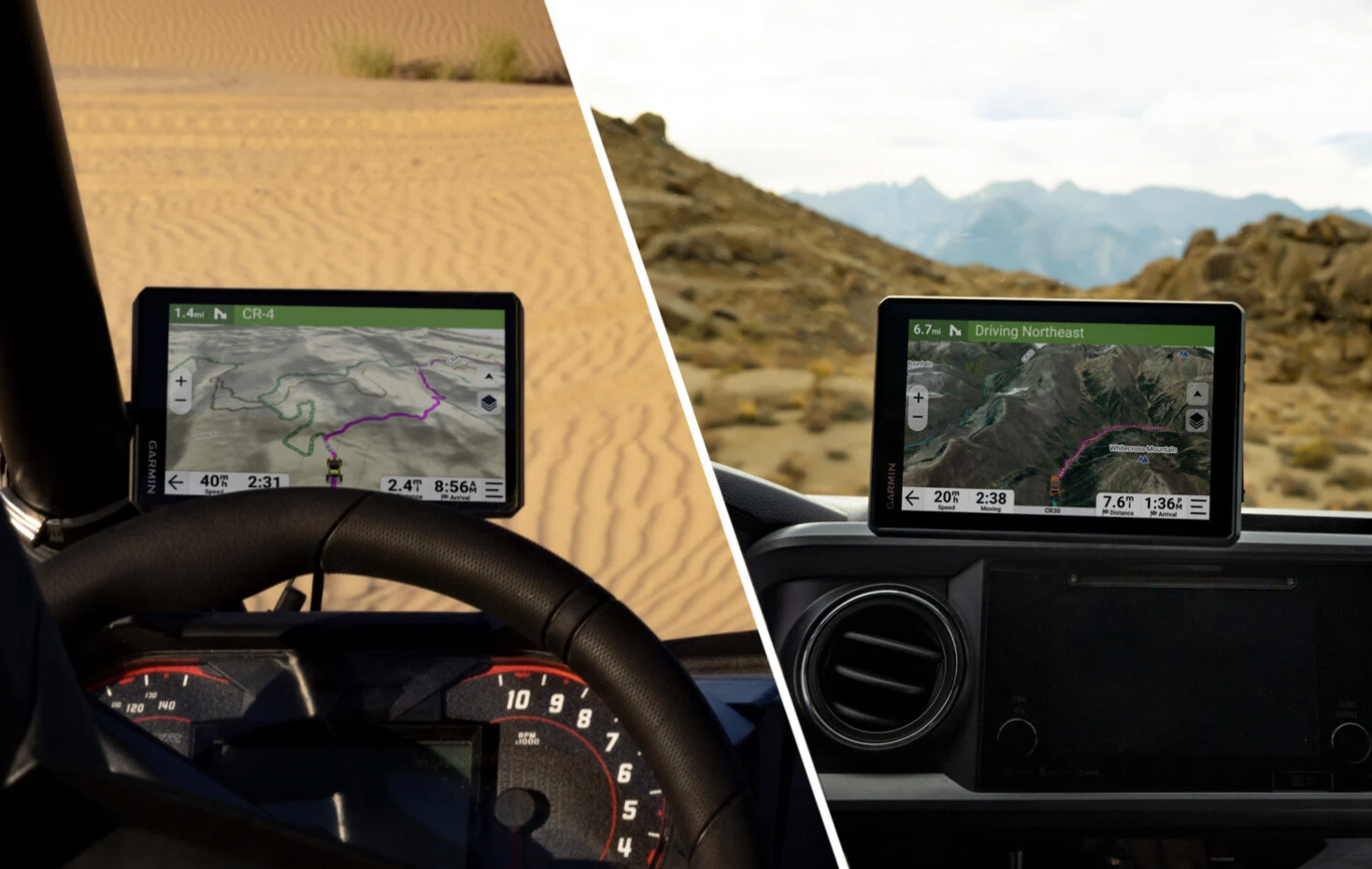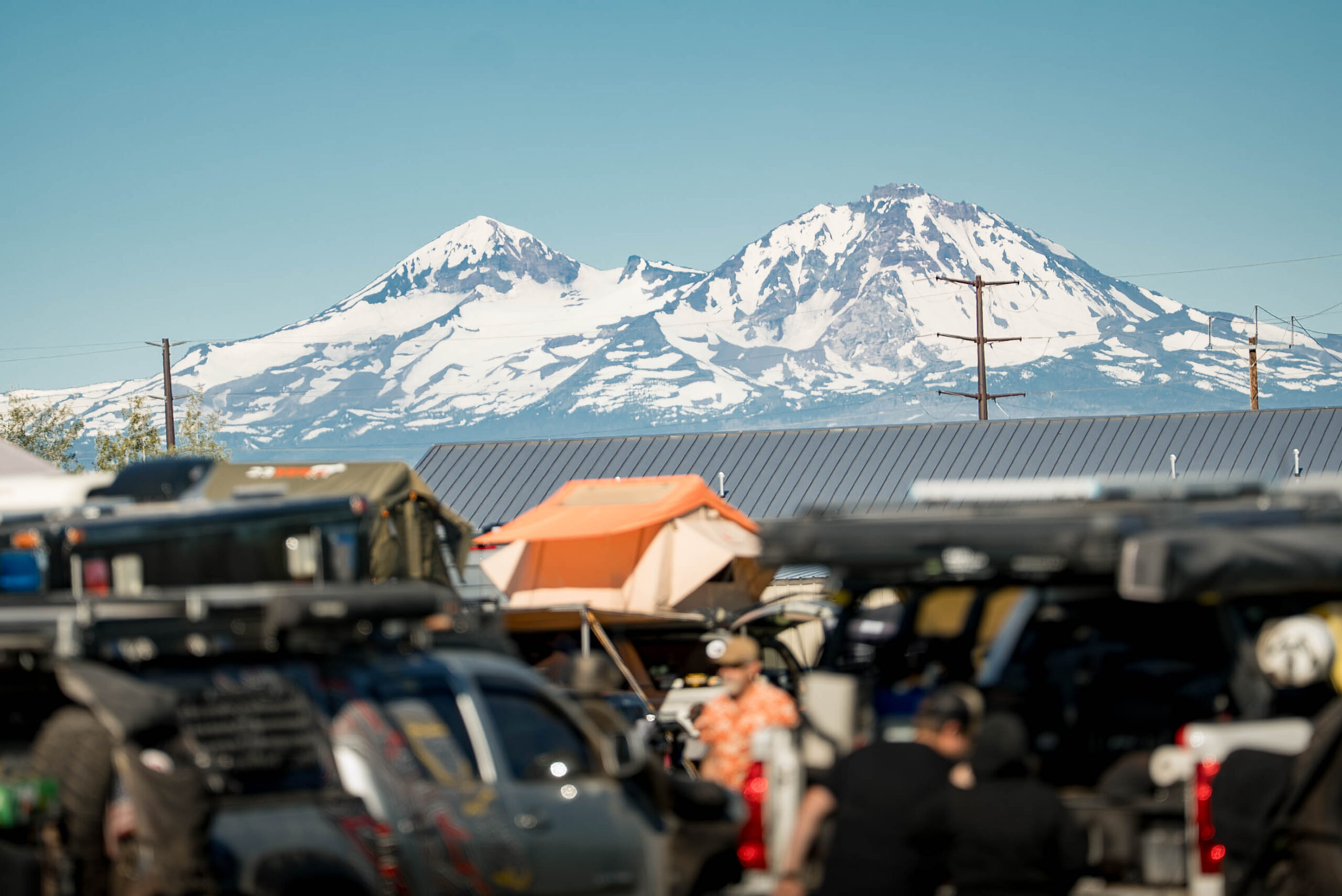Have you ever had that trip? You know the one I’m talking about: It is so close to home that you tell yourself it isn’t worth the gas. Yet, deep down, you know that you will likely find something new and interesting along the way.
For me, that route is the Green Country Oklahoma Adventure Tour.
The GOAT meanders along the foothills of the Ozark Mountains in Northeast Oklahoma looping around several beautiful lakes, along a scenic river, and through several wildlife preserves and management areas. I have explored many of these areas before, but have never followed the route to see what other travelers see when they visit my part of Oklahoma. With a few days off work, I figured what better way to spend my out-of-office time than chasing an overland route through the backwoods of the Ozarks.
ONE-TANK ADVENTURE
This trip would essentially consist of a day of exploring some familiar places, camping close to home, and getting a chance to shake down a new-to-me vehicle, a Lexus GX470.
With the ever-changing landscape of a world coping with COVID-19, my wife Rachael’s and my priorities of traveling in vehicles full-time have changed. We are extremely fortunate to have the ability to put down roots and wait a couple of years for things to calm down.
After hunkering down at home in Oklahoma, we both quickly realized that sharing a lifted ‘80s Toyota 4Runner was not feasible. So, we began searching for an additional rig to become our new daily driver and eventual replacement for our 4Runner. After a short search, we found a well-cared-for Lexus GX470. Since we got it a few weeks ago, I have been itching to air down the tires and get some wheel time driving our bone-stock rig and see what it is capable of.
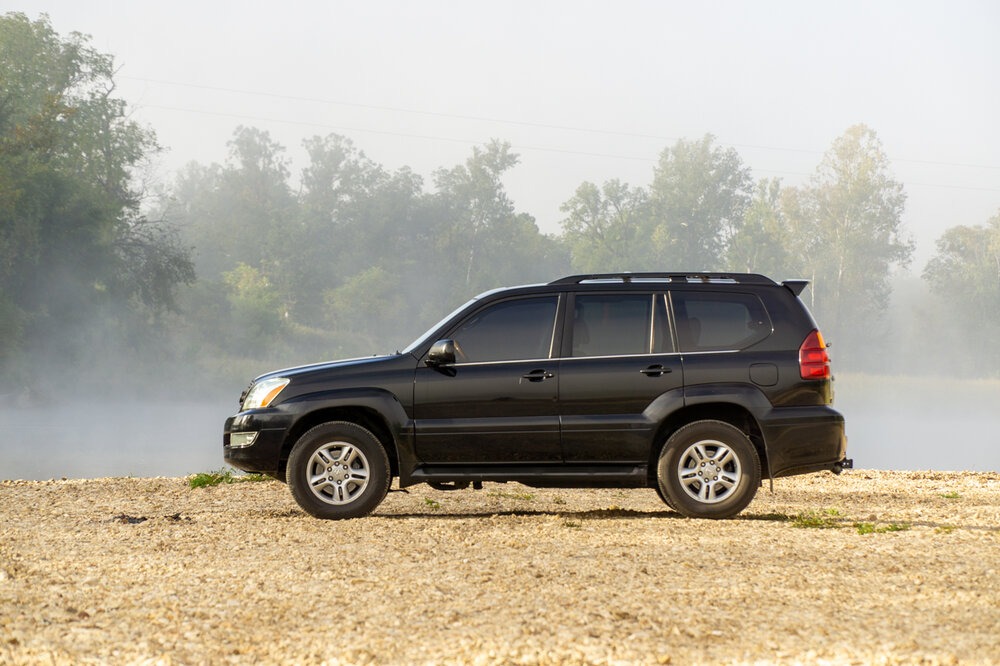
Photo: Zach Elseman
I had forgotten the simplicity of the overnighter. I had worked a long week and it was really nice to be able to throw a few things in the back of the rig and take off first thing in the morning. The leaves had almost finished changing and the overnight temperatures were finally in the low 40s, my favorite time to camp without question.
I find the simplicity of packing my rig for a solo adventure refreshing. When traveling with my significant other, I feel the need to pack as much gear as I can to be prepared for anything that could happen. Simply put, I want my wife to be comfortable while we travel so that she will keep traveling with me. But when I travel alone, there is a motivation that springs up inside of me to pack as little as possible.
Although our new GX provides a significant increase in the amount of cargo space, I chose not to pack it to the gills. My standard solo camping kit includes my small backpacking tent, a lightweight Helinox camp chair, an ultra-lite fishing rod and reel, and my new Trekka jacket.
In previous vehicles we have outfitted a second battery and a refrigerator to keep everything cool. While that is my preferred way to travel, we simply haven’t started building this vehicle out yet, so I brought along my cooler. Miscellaneous kitchen and camp supplies like my cast iron pan and toiletry bag top off the Plano box that fits snuggly in the back of the GX. I keep the plastic tote box packed so it can be tossed in the back of either rig at the mere mention of an adventure.
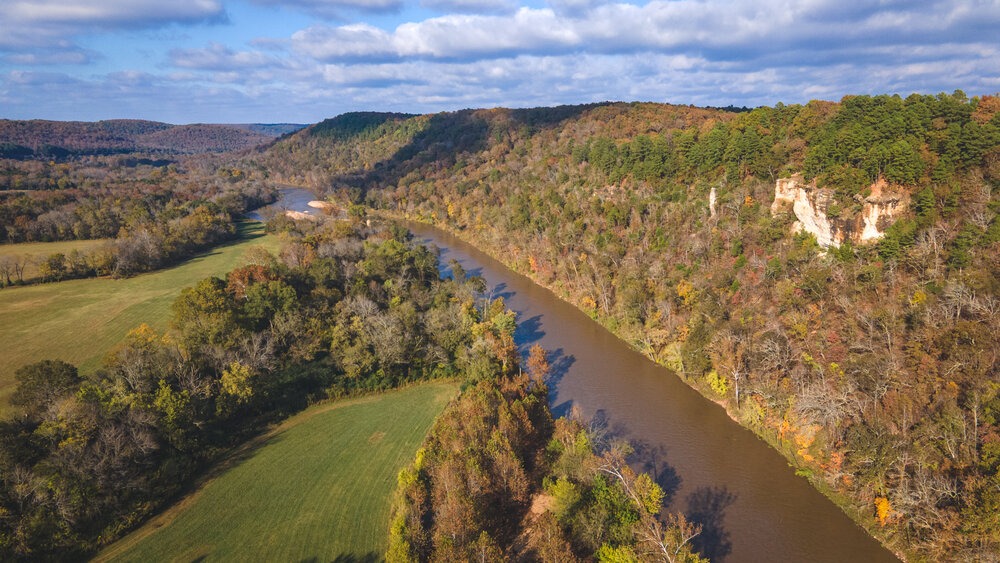
Photo: Zach Elseman
I picked up the route just outside of my town of Tahlequah, Oklahoma. Tahlequah is known as the home of the Cherokee Nation — after forced removal from their ancestral lands in the Appalachians during the nineteenth century. I have felt a deep connection to the rivers and woods of this part of the country since childhood. My ancestors were among those that were removed from their eastern lands and forced to cross the country on the Trail of Tears. Historically, the Cherokee people have had a connection with nature that runs deep. The belief system of many Cherokees, both past and present, is that all living things are sacred and I feel that when I am exploring on trips like this. Whether I am driving an old two-track or casting a line at a new fishing spot, the connection to nature is real and I crave it when I haven’t been out in a while.
It seems that the creators of the GOAT had one thing in mind when they mapped it out: stay off of pavement and highways at all cost. I zigzagged my way across a labyrinth of county roads, mostly dirt, but some rutted and rocky tracks that required some special attention. As I reached one of the first sections of pavement near the Grand River, I consulted my map and GPS. I found a short offshoot that would undoubtedly add nearly an hour to my trip, but it would keep me off pavement for another few miles. I left the route and began navigating a series of muddy tracks that followed the river for a stretch.
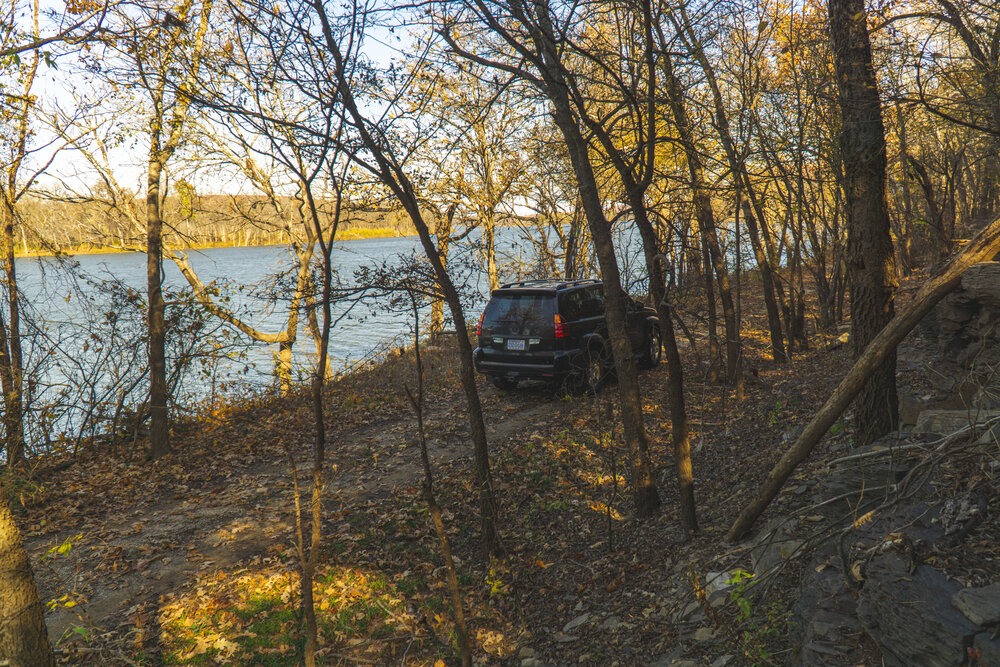
Photo: Zach Elseman
Areas like this are often very difficult to navigate, as they have been discovered by locals that enjoy bogging through mud holes at high rates of speed in their pickups. Thankfully, there hadn’t been quite enough rain to make it worth their while and the ruts were manageable, even in a completely stock four wheel drive. I reached the end of the offshoot and found pavement for the first time since setting out.
WHERE THE BUFFALO ROAM
A quick couple miles of paved county road ended suddenly, as the dirt roads led me through the hills and hollows around Lake Eucha and Spavinaw Creek. As I crested one hill, before reaching the creek, I noticed that the fences began getting much higher.
Typically a four-foot barbed wire fence is sufficient for keeping penned in all of the cattle and horses being raised in this area. However, what I spied was a massive Jurassic Park-esque 10- to 12-foot tall security fence designed to keep something massive in — or out. Intrigued, I decided to explore more and turned down the drive.
Pulling onto the shoulder, I hopped out of the GX, popped on my Trekka jacket, and investigated more. Even in the foothills of the Ozark mountains — hills, by Western US standards — the Oklahoma winds can be absolutely brutal. Having a windproof layer is essential in this part of the country in the fall and winter.
I eventually came upon a security gate and an arguably obscene number of signs indicating that the land beyond the 12-foot fence was private property owned by the Cherokee Nation.
I looked around a bit and discovered the reason for the security fence: hundreds of bison grazing just out of sight from the road. I watched as these massive creatures, some nearing 2,000 pounds, meandered slowly eating bits of alfalfa and bermuda grass.
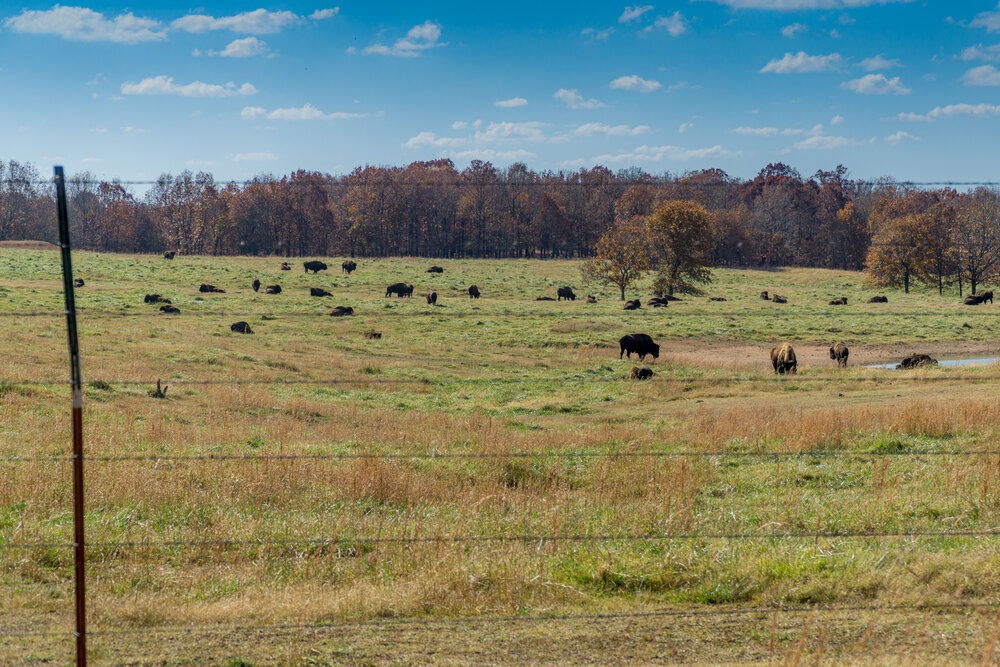
Photo: Zach Elseman
Upon returning home, I learned that the tribe manages a herd of around 200 bison that were all relocated from the great remaining American bison herds in the Badlands of South Dakota, Yellowstone National Park, and Teddy Roosevelt National Park.
The bison played an integral role in the history and culture of the Cherokee people. When bison roamed as far east as the Appalachian Mountains in Tennessee, the Cherokee would use every part of the animal for sustenance, clothing, tools, and shelter. The bison will play an important part in the future of the tribe as well, providing food for tribal members in need for decades to come. After watching the buffalo roam for way too long, I climbed back into the GX and rejoined my loop around Grand Lake O’ the Cherokees, the most popular lake in Oklahoma.
Not long into my drive, I found myself in an interesting predicament, as the state highway simply stopped with an abrupt “Road Closed” sign.
I checked the map and the only apparent way across the lake without a significant redirect was across the Pensacola Dam, directly behind this pesky sign. As I pondered my options and zoomed in on my GPS, I noticed a shockingly large number of side-by-sides pass my truck. As they roared by, they disappeared off the shoulder of the road, directly below the dam. Shocked, I revisited my map, which showed the hint of a river crossing that ran below the dam. To be sure, I’d need to investigate. For the first time in my life, I followed a pair of Razrs down the hill. Through the haze of the side-by-sides’ dust cloud, I discovered a well-traveled path across the river just a few hundred yards downstream from the dam.
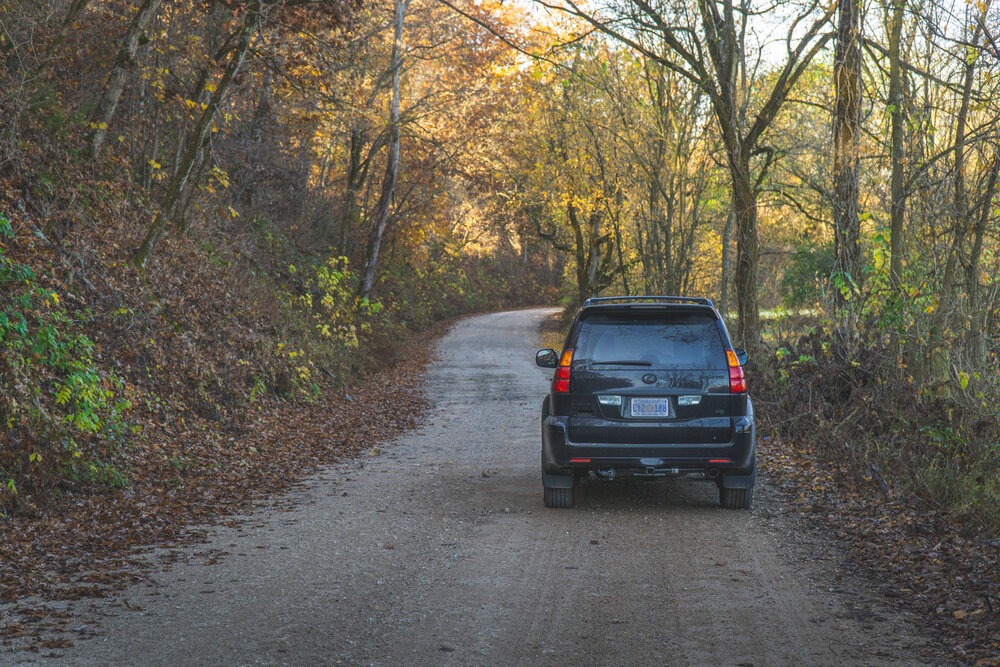
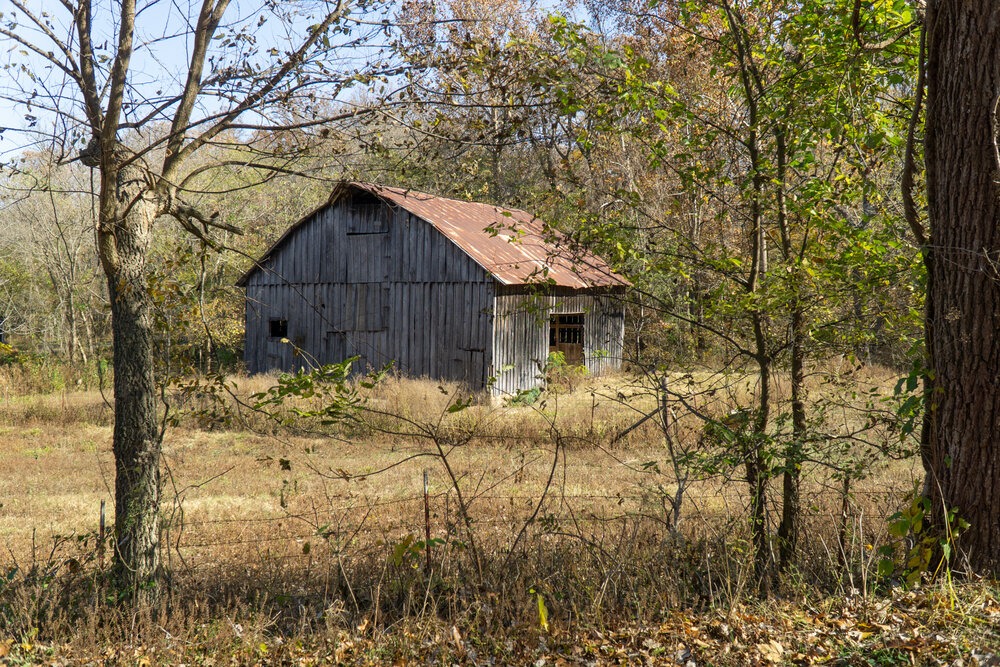
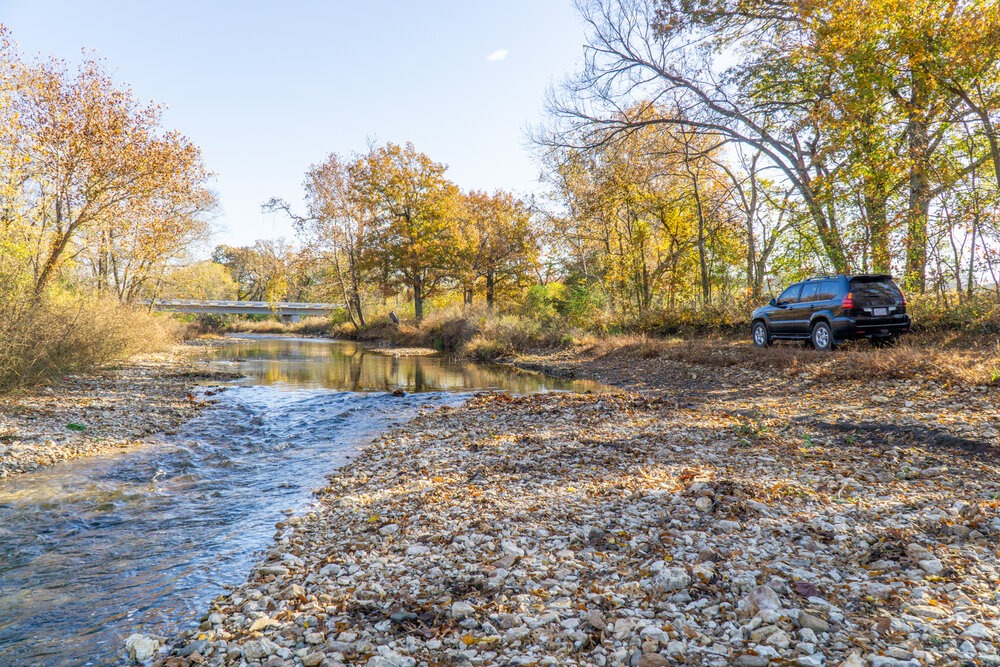
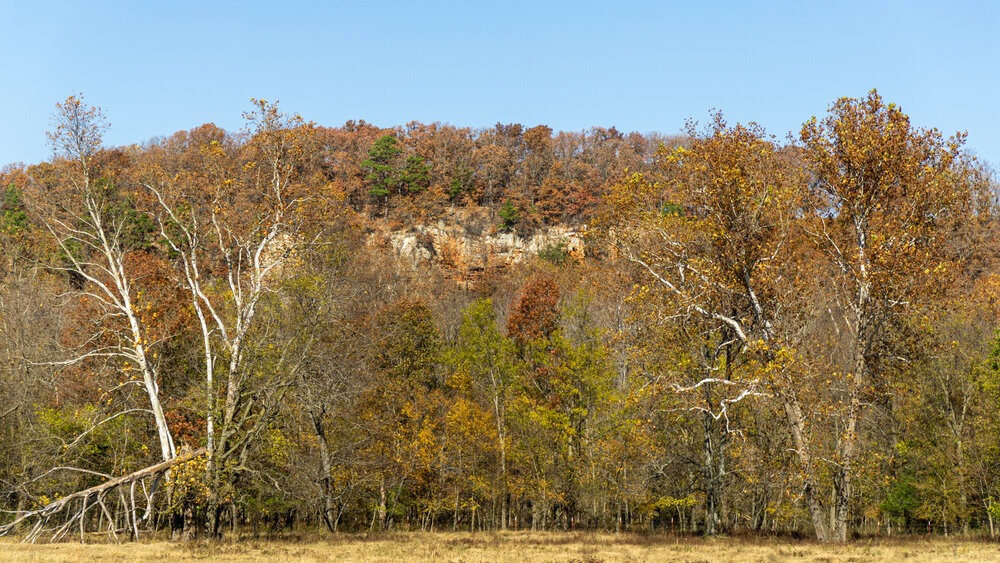




Nearly a week before my trip, Northeastern Oklahoma had been hit by several heavy rainstorms. This swelled the beginning of the Grand River higher than usual below the dam. I watched as the two buggies bobbed and bounced through the river crossing as their 33-inch tires mostly disappeared under the water. From my time researching the purchase of our GX, I knew that it was essentially a Toyota Prado, which boasted a fording depth of around 30 inches in stock form. I felt confident in my ability to cross the river, but there was only one way to know for sure.
Stepping out of my rig, I slipped on my jacket and secured my phone and keys in one of the many pockets — I did not want to take a wrong step and chase my keys or phone down river. The water was deeper than anticipated and quite cold. I had reservations with driving my previously untested vehicle through a deep water crossing. However, the time I’d save fording the river was too valuable to ignore. A small crowd of off-roaders and wheelers began to congregate around the crossing, presumably to watch a Lexus get stuck or, worse yet, capsize. Despite media portrayals of what people from the South are like, I know any one of the nearly dozen rigs slowing down to watch would waste no time to help someone in over their head or up to their door seals.
I engaged the rear diff-lock, shifted the transfer case into 4-HI and proceeded to ease into the deepest pool of the crossing, around twenty feet across and gently accelerated, creating a bow wave that I was quite proud of.
The GX reached the far shore, left the rocky river bottom and climbed the muddy bank without even a bit of wheel spin from the all-season tires. The faces of the spectating diehard wheelers ranged from impressed to disappointed. I assume some were impressed that a bone-stock Lexus cruised through their off-road park with ease and meanwhile others were disappointed that they stopped to witness such an uneventful crossing.
READ MORE: WHAT DOES OVERLANDING MEAN?
The redirect around the dam, and my numerous stops along the way, had seriously infringed on my daylight. I wanted to reach a campsite along the Illinois River before dark and potentially catch my dinner. So, I hopped off of the GOAT route and opted for a pavement shortcut to camp.
I reached the campsite before dark and, as luck would have it, there was enough daylight left to fish before the sun went down. With all of the rain in recent days, fishing was challenging and unfruitful. The clear waters of the Illinois River typically produce smallmouth bass that are an absolute blast to catch on small tackle, but the turbid water was simply too murky and moving too fast for any real success. Thankfully, I packed a backup plan for dinner and I settled in for a relaxing evening by the fire.
As the sun went down and the temperatures began to drop, I reached for my Trekka Element jacket and built a fire. The material used on the jacket is resistant to coals and embers like those that you might find while sitting around a campfire and I know firsthand the fate of the standard puffy jacket when it flies too close to the sun, so to speak, and the resulting duct tape patches simply aren’t pretty.
THE JACKET
My partner in crime for this trip was the new Trekka Element jacket. I had the opportunity to test the Element jacket over several weeks leading up to this trip. My initial reaction was that it looks and feels better than the majority of the outdoor jackets that I have worn. Where most jackets are puffy and bulky, the Trekka is form-fitting with plenty of stretch in the waist and shoulders.
The fact that the outer material is ember-proof is extremely cool. Although I didn’t test it intentionally, I sat by the fire for several hours without as much as a pinhole. The material is extremely durable and has held up well to several brushes with thorns and thickets while hiking around.
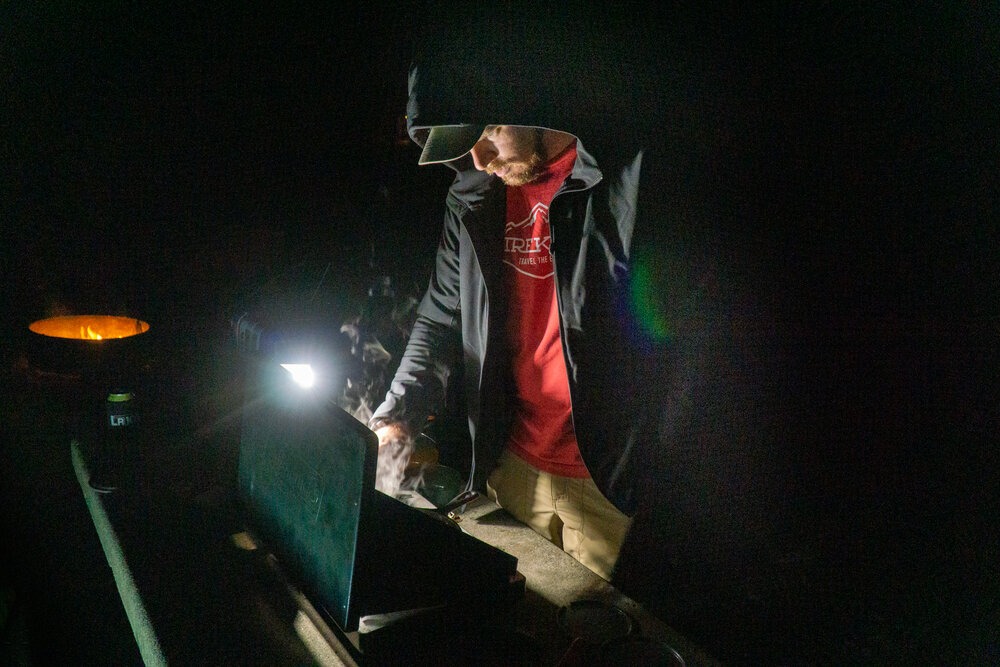
Photo: Zach Elseman
The Element jacket ticks all of the boxes for keeping you dry and protected from harsh winds with a fully waterproof and windproof shell, as one would expect from a jacket in this price range. Where the jacket really shows its value is in the details.
There are eight pockets, but you would never know it when inspecting the jacket. Two chest pockets on the outside allow easy access for left- or right- handed folks, without letting out precious body warmth. Two internal chest pockets allow for more discreet storage of items like wallets, phones, or passports. The external hip pockets are fleece-lined for a very comfortable inner-pocket experience for your hands.
I have been impressed with the usefulness of the Element on vehicle-based adventures and it really shines as an everyday carry item. The Trekka Element is one piece of kit you can bring on all of your adventures from the office to the woods. Clock out, hit the trail, and don’t worry about your jacket being able to keep up.
FLYOVER STATES
After making a quick dinner, I settled in around the fire and turned my attention to the skies. Camping in so-called “flyover” states like Oklahoma is one of the most underrated experiences in the Mid-South. The lack of many highly-populated cities makes for excellent star viewing and the Milky Way Galaxy is often clearly visible when the skies are free of cloud cover. This particular night was crisp and clear and the Milky Way was visible to the naked eye and I even caught the occasional shooting star zipping across the sky. I slipped off to sleep watching the stars through the tent mesh, thankful for the opportunity to experience the beauty of nature so close to home.
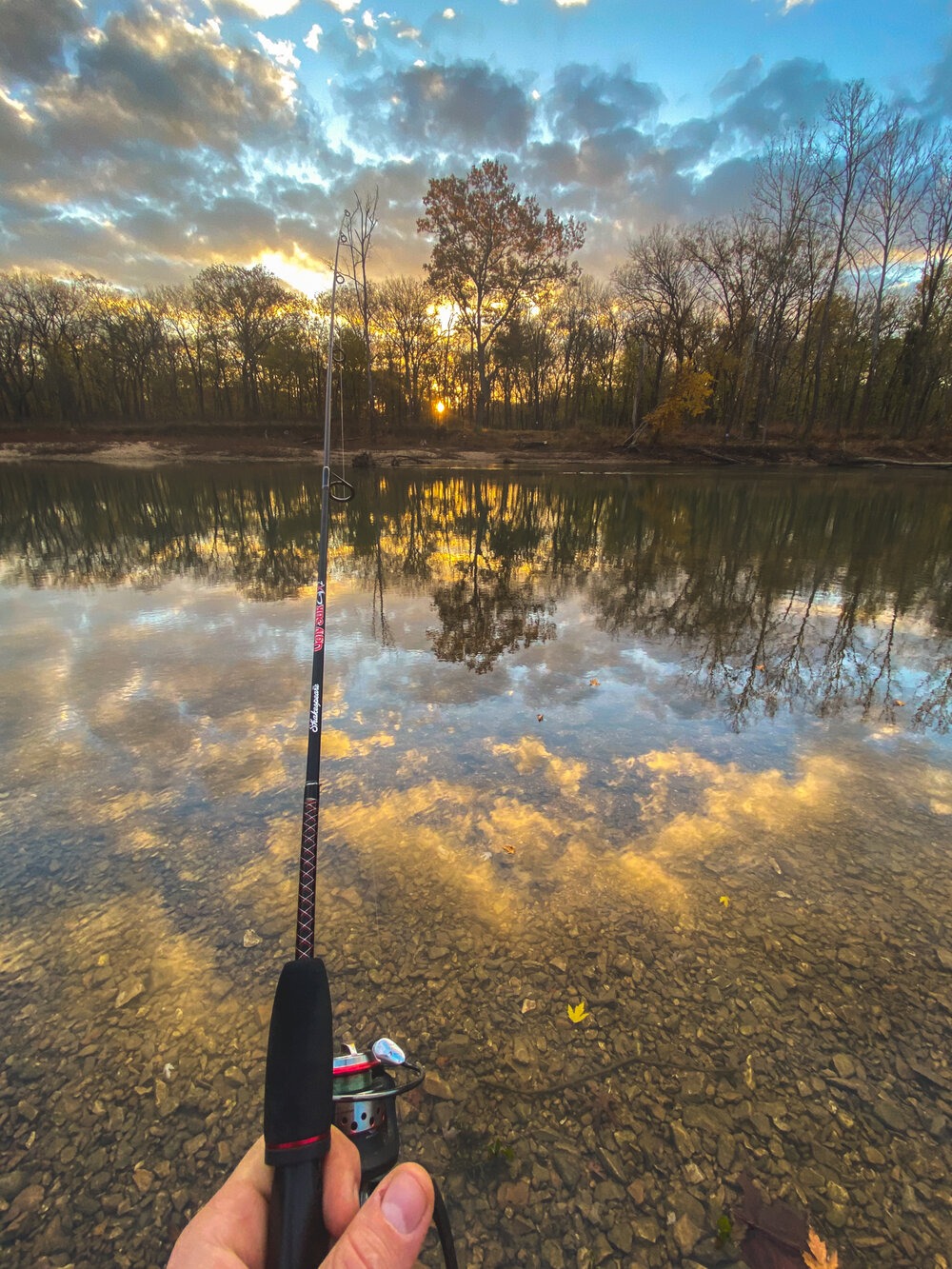
Photo: Zach Elseman
The next morning was crisp and cool and I spent the first couple of hours of daylight fishing near our campsite. Despite my lack of success the day before, a morning spent in the outdoors is never a morning wasted. The morning fog had settled on top of the water and each cast seemed to disappear into a low hanging cloud before being reeled back into the clear. Nibbles here and there gave me hope of later success. Perhaps I would return the following week when the water level returns to normal. I returned to camp, fried up some bacon and eggs, and loaded up for the short drive home.
An added benefit of packing light is that camp takes minutes to tear down. Waiting on the cast-iron to cool allowed me to enjoy the quiet of the morning with a cup of coffee in hand. Retracing a few miles from the previous day, I crossed the river and rejoined the trail on the east side.
I was immediately rewarded with sprawling pastures, rock outcroppings hanging over the hardly used road, and the occasional peek at the blue-green waters of the river around nearly every turn. There is some peace to be found while traveling so close to home as time becomes much less of a concern. I am free to explore since I know that a long day of driving doesn’t await me with the potential for breakdowns and delays.
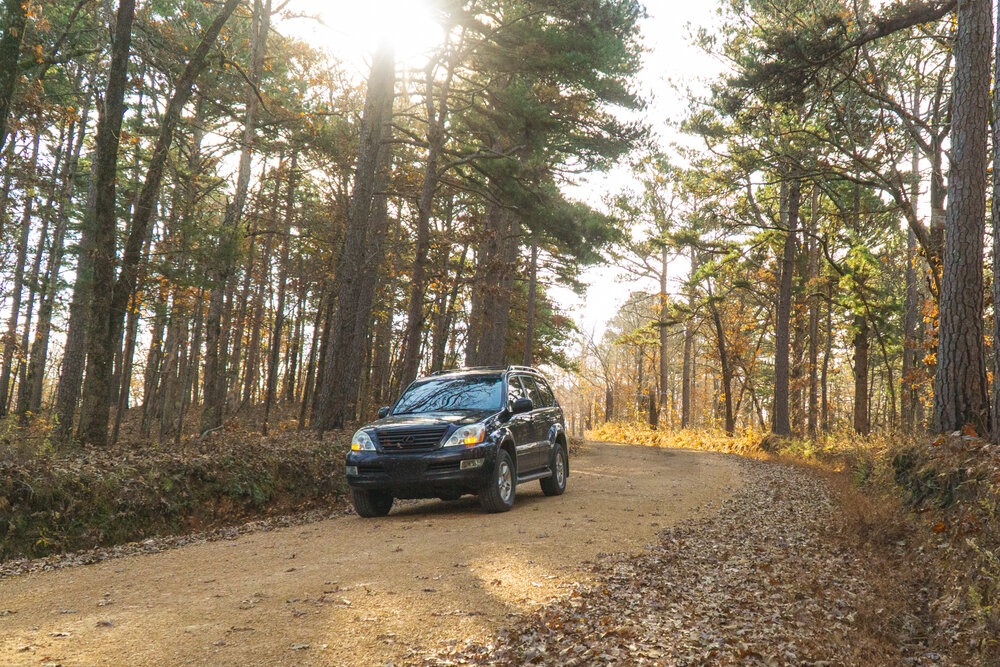
Photo: Zach Elseman
The county roads leading back to town are leaf-covered and quiet with the hum of my engine as the only noise for miles. I took my time winding back home by stopping for the occasional photo or to take in a view from a rock outcropping looking over the river. My solo one tank adventure ended without drama and without problem. My new-to-me rig showed up as an extremely comfortable and capable adventure vehicle that needs a few modifications but is otherwise very fun to explore in.
Best of all, I rediscovered a connection with the natural spaces just outside my front door.
Header image credit: Zach Elseman
